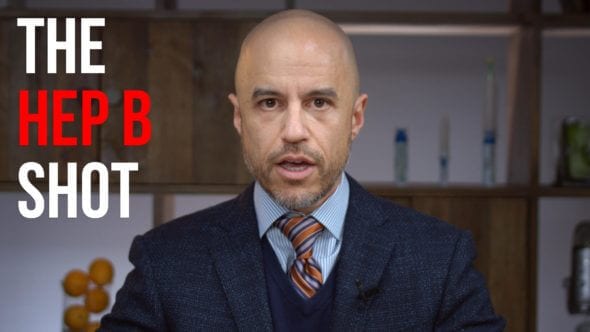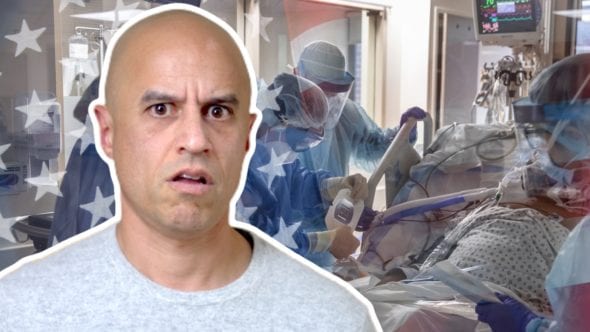Let’s talk risk, ventilation, and the Swiss Cheese model.
Here’s a summary article with further reference links.
Full Transcript Below:
So when it comes to COVID-19, how safe is air travel? This is a common question I get asked all the time. And it’s really interesting because we have some data on this, not nearly enough but enough to really have a good conversation. So let’s do that now. Recently, there was a study of a long haul flight, about 18 hours Uggggh It gives me the hives just thinking about it from Dubai to New Zealand. Now the locations are important because New Zealand has a very aggressive quarantine policy for people who land in the country. So it’s like a 14 day mandatory quarantine.
So during that time people are surveillance tested for coronavirus and so it’s a pretty controlled environment probably a really good environment to do a study on airplane transmission. So during this flight from Dubai to New Zealand it turns out there was an index case a person who was infected, or it might even be two people out of seven who were infected when they boarded the flight. And we know this by looking at the epidemiologic data that happened afterwards after people started testing positive, ultimately a total of seven people tested positive while they were in quarantine in New Zealand. And what they found was the genetic lineage of that virus was the same in those seven people. So most likely they were sharing the same virus. Now you can only find that out if you do genomic testing on the actual virus you don’t just do the Cepheid GeneXpert PCR test you have to follow up with actual genomic sequencing of the full RNA. And they did that in this case because the New Zealanders are crazy about that stuff.
So in that case, they were able to say, okay, they all came, the virus all is the same. So in this cluster of seven people where was the transmission occurring? So they went back and realized, okay they were sort of required to get screened before getting on the plane with testing. It turns out the guy who was a guy or girl who was positive before getting on the flight there was an error, it was presumed that he tested negative 48 hours before getting on the flight but it was actually four days prior. Now this is interesting because that means that that negative test, whether it was a false negative or something else where he got infected after that was not enough screening to prevent him from boarding that plane with an asymptomatic at that time case of coronavirus. The others got tested as well they were negative getting on and got on the flight. Now all of the people were sitting in aisle seats within the same four rows on this 18 hour flight.
So they were relatively close to each other but they weren’t necessarily all in the same row, but within four rows. Now, why is this important? Well, it turns out if you’re gonna be on an airplane it is one of the safest place… A modern aircraft is one of the safest to be from an infection standpoint or ventilation standpoint of any confined space. And the reason is modern aircraft use HEPA filters to circulate their air. HEPA filters capture very tiny particles from air and the way that this filtration works is that you have air flow coming from the ceiling and it goes underneath basically the window seat under the window.
That’s the path of airflow. And this path of airflow is a laminar that’s a physics term, which means it’s not turbulent it’s not like circulating everywhere and causing clouds like in those Charlie Brown cartoons where you see Pig-Pen and he’s got a cloud of dust around him and flies and stuff. It’s this very smooth flow non turbulent flow that carries particles out and through the HEPA filters. Now the entire air volume of the airplane is actually changed every three minutes while you’re cruising, while you’re in the air and all this equipment is running.
That’s important. That’s an important distinction. And on top of that, about 40% of the air is recirculated in the plane through these HEPA filters and the other 60% is fresh air piped in from outside the craft. So it’s a pretty aggressive ventilation inside planes. Now we know that ventilation is part of the component of it the other component of it is, well ventilation is not gonna help you HEPA filters aren’t gonna help you if you’re right next to somebody and they spew droplets that contain the virus because that virus is gonna end up in that flow getting to you, going in your mucus membranes going in your eyes and infecting you or landing on a seat, armrest you touching the armrest you’re rubbing your face that’s a lesser mode of transmission but it can happen.
So back to this flight, these guys were four rows apart of the people who got infected two of them did not report wearing masks. Now this is the thing: masks are often required by policy, they’re not a law in the U S by the way but they’re required by policy on most airlines but the degree of enforcement varies. And on top of that, remember that you can take your mask off and have to in order to drink and eat and on an 18 hour flight there’s gonna be a lot of that going on. So there probably wasn’t fully consistent mask wearing I think people were wearing gloves too for some of these passengers that were infected but a couple of them didn’t even report wearing mask, but the others did and still got infected. But what’s interesting too, is that others in those rows did not get infected.
And one of the people infected was presumably infected after the fact in quarantine because when they made the diagnoses people started testing positive later during quarantine and the index case who was asymptomatic and this is often the case actually developed symptoms. So they weren’t REALLY asymptomatic, they were pre symptomatic. And therefore probably had a higher viral load because remember if you’re purely asymptomatic if you never develop symptoms, but you test positive it’s likely that your viral load and your infectivity was not all that high but if you were presymptomatic in other words you just hadn’t shown symptoms yet but you’re gonna show symptoms at that time your viral load could be very high, it could be replicating all over the place and that may have been what happened with this guy.
So what’s interesting about this case is in Kuala Lumpur they did a stopover 18 hour flight’s a long time, you have to stop refuel, during that two hour stopover the power equipment on the plane actually was shut down for some reason whether it was a mechanical issue or something else for about 30 minutes and they were on the ground for two hours. Remember all that air exchange on the flight happens when the equipment is up and running. So for 30 minutes, there was no good ventilation on that plane and everybody’s breathing their own stink air.
And if you’ve ever been on a flight and you’re sitting on the tarmac and you smell jet fuel and you smell farts, that’s what’s happening is the ventilation is not really happening. We’ve all been in those situations, right? Your neighbor, you’re just like, damn homie couldn’t you just like hold it in a little longer? So in that setting there was a possible, it could have been that transmission happened at that point we don’t quite know but the picture that you’re starting to experience here is what they call the Swiss Cheese Model of system failure. So where did the transmission occur? Well, if everything were going right there are multiple layers of cheese that are protecting you each one has a hole or two in it where it could fail. And so if Swiss cheese one there’s a hole and you get through it, Swiss cheese two is lined up a little differently maybe it blocks you right and Swiss cheese three. But there are rare times where all the Swiss cheese and all the holes line up and you go right through.
And in this case it could have been poor ventilation, it could’ve been the missing link of the person not getting tested. So if he had been tested two days prior to the flight that he or she, that might’ve caught it and wouldn’t have gotten on the plane would have prevented the transmission. If the ventilation system hadn’t failed on the ground it might’ve prevented transmission. If the people who weren’t wearing masks wore masks that might’ve, if they were all wearing higher grade mask high fidelity masks, like KF94s or N95s which as we see increasingly contagious variants emerge those might be more efficient masks.
We know they work in medical settings in high-risk procedures and they have very, very good protection, right? As we start to get more vaccination and more people vaccinated we’ll have a threshold for infection or a higher threshold for infection and there’ll be less spread on airplanes. So going back to this case people started testing positive then after the fact, one of them caught it in quarantine which again speaks to the local sort of household transmission that’s very common. And then, so back to the prime question is it safe to fly?
The answer is well, maybe, and maybe not and it depends on how many of those safety mechanisms are in place, how careful the passengers are, how well the equipment’s working, how good the screening is, right? So if we’re talking about recommendations as this virus potentially becomes variant in a way that makes it a little more contagious as we spin up vaccinations but they’re slow, it might make sense that people are more compliant with masking on flights when you’re in enclosed areas, maybe the mask quality should be higher, maybe you ought to be double bagging your mask or using a KF94 and N95 we’ll probably do a show on that at some point.
Getting as many people vaccinated as you can, doing the testing ’cause that’s gonna be important and then studying the living crap out of it, New Zealand did it but guess what? How many flights in the United States do you think there were that where transmission occurred where we have no effing clue when and how it happened? Probably the vast majority of any spread that’s occurred on airplanes has occurred in a way that we haven’t been able to track it because we don’t do the contact tracing, we don’t do the testing, we don’t do the study, we don’t follow up, we don’t do the genomic testing to see are these viruses the same. And so it’s just total chaos here.
But we can look at people who’ve done it correctly and then learn from it because believe me, man, this is still just a warmup for a pandemic that has a high even higher fatality rate and a higher contagiousness and at some point that’s coming. So the other thing that may be useful is rapid antigen testing at the point of boarding the plane because those tests often are positive only when people are highly contagious and have high viral loads you can still have false positives but that might be a way of that final sort of Swiss cheese lining up and saying, Okay don’t get on the plane because you’re actually contagious and don’t even know it, right?
And you can follow up with real testing. So there are ways to fly safely. There are ways to open up again. There are ways to science the crap out of this and we have to do it. I’m gonna put some links in the show notes to articles you can read with further links to learn more about this stuff. Please do me a favor, become a Supporter of the show because it covers everything we do so we never have to do sponsored episodes or rely on ad revenue or social media algorithms and clickbait titles, we just basically serve you with education and a little bit of entertainment. All right, guys, I love you. We are out, peace.
Related Videos
Category
- The ZDoggMD Show (797)
- Featured Videos (188)
- Doc Vader (142)
- Against Medical Advice (128)
- Medical Humor (95)
- Public Service Announcements (87)
- Music Parodies (74)
- Nurses (59)
- Meditation (38)
- ZVlogg (36)
- The VPZD Show (31)
- ZTalks (28)
- ZBlogg (24)






